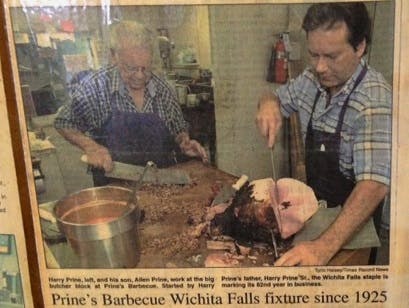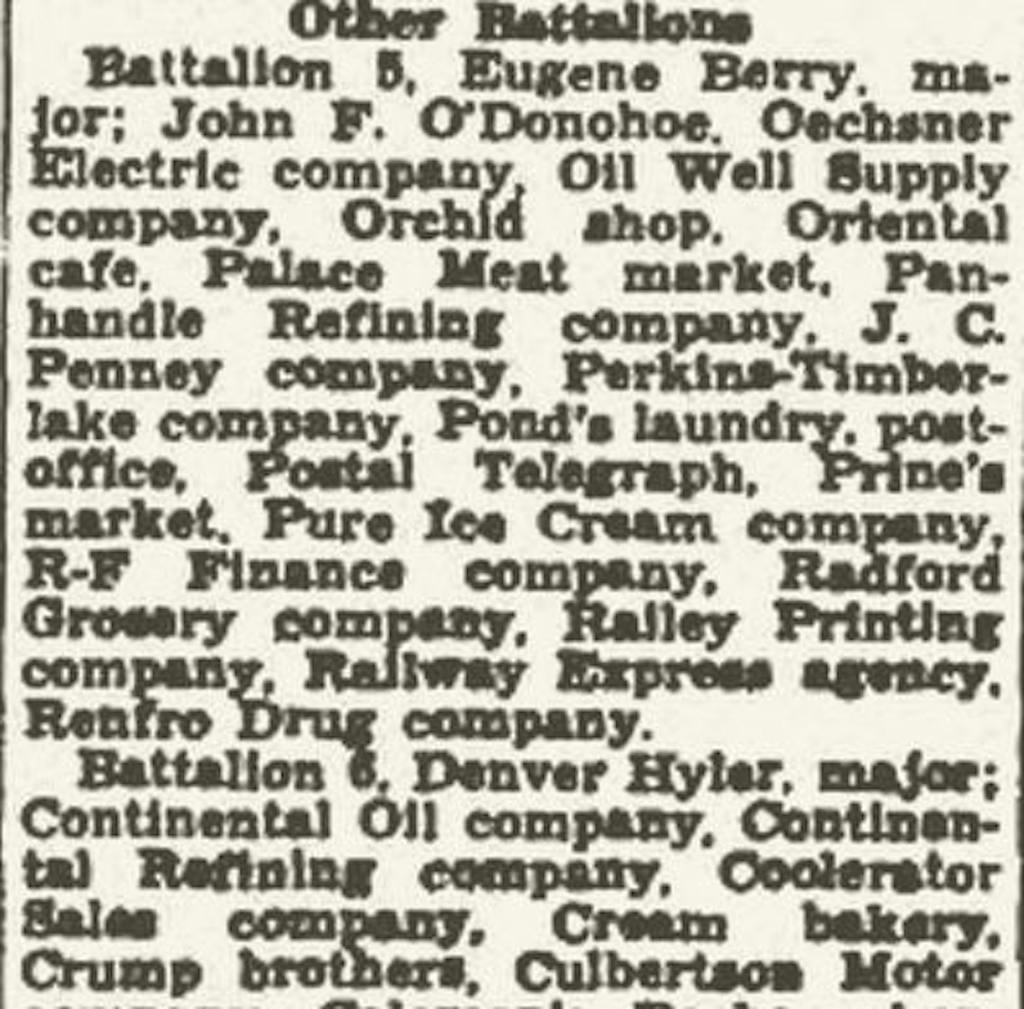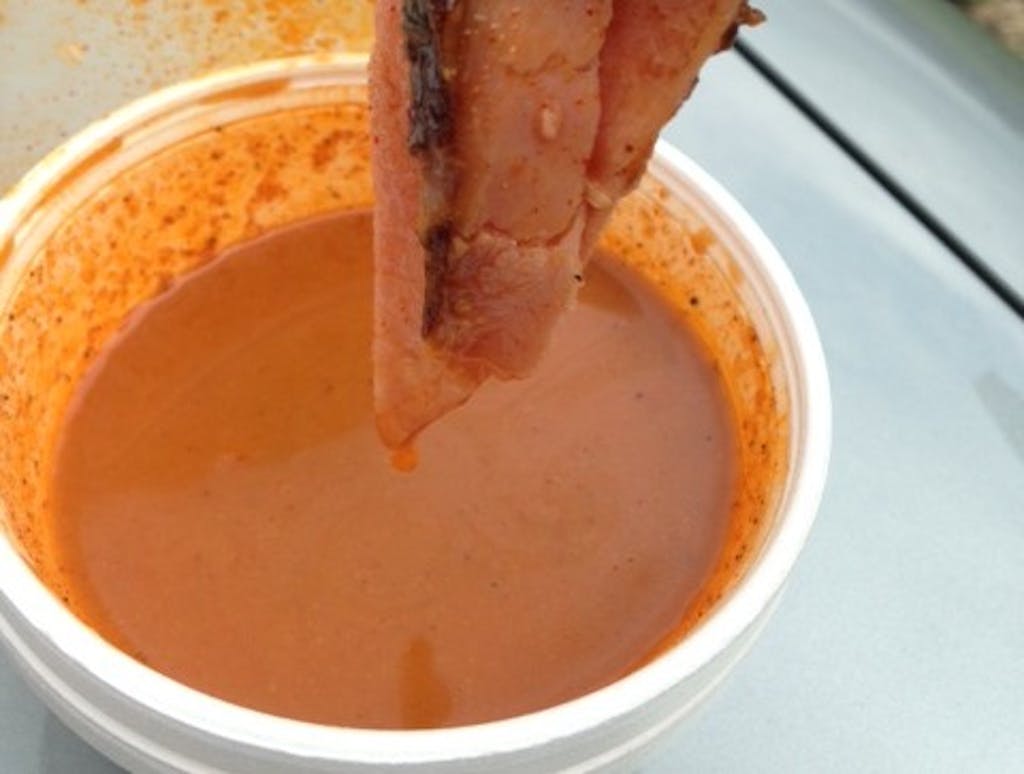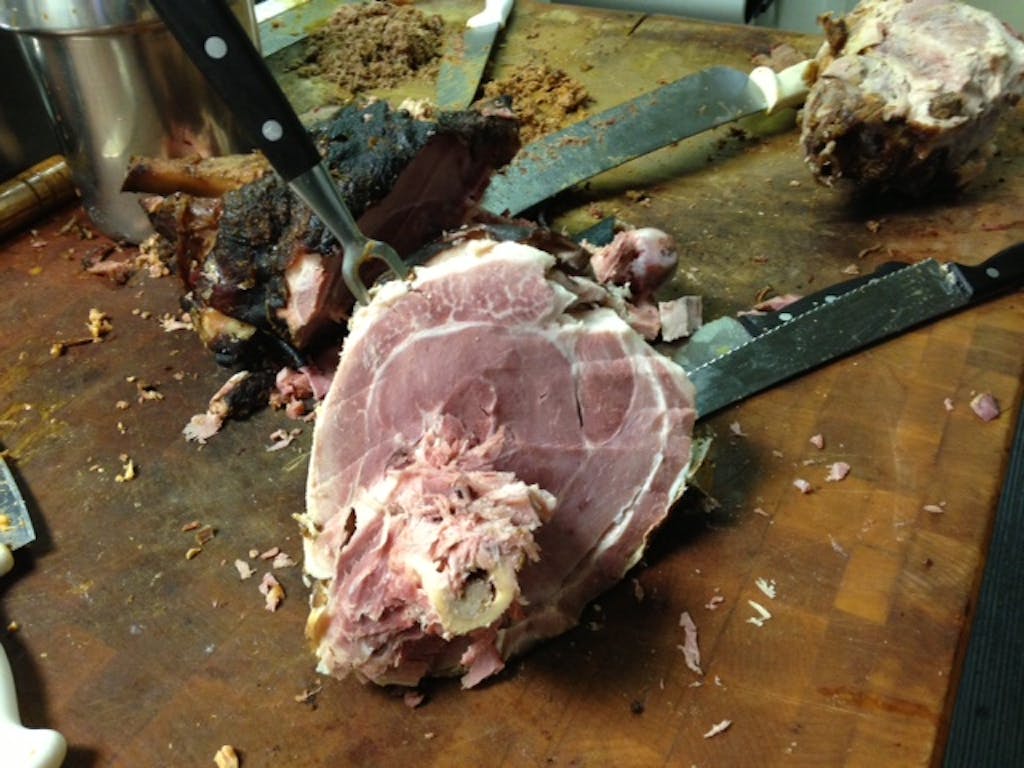
Owner/Pitmaster: Prine’s Barbecue, opened 1925
Age: 61
Smoker: Wood-fired brick pit
Wood: Oak
Like many third generation pitmasters, Allen Prine was a reluctant one. He had grander plans than working for dad, but now he is the bearer of the family barbecue torch. His granddad Harry Prine Sr. passed away long ago and he just lost his father, Harry Prine Jr. three years ago. When Harry Prine Sr. opened the place in 1925 the population in Wichita Falls had just had its first big boom to over 40,000 residents from just over 8,000 in 1910, and Black’s BBQ in Lockhart (who claims to be the oldest Texas BBQ joint in the same family) was still seven years from opening. Unlike its Central Texas contemporaries, Prine’s didn’t start as a meat market that offered barbecue as a secondary product. It was instead focused on cooking barbecue from the day they opened and had no butcher shop component. That makes it a rarity in those days, and now it’s going on eighty-nine years of business putting in even more rare company. As Allen Prine told me, “everything changes. We try not to, but everything else does.”
Daniel Vaughn: Prine’s has been around since 1925. Who started it?
Allen Prine: My granddad, Harry Prine Sr. He and my grandmother came from Corsicana somewhere around 1922. He worked as a butcher somewhere in town then opened Prine’s barbecue here in the same location we’re in today. It was a wood building back then.
DV: Was your grandfather from Corsicana?
AP: I’m not really sure. My parents didn’t give me a whole lot of history on my grandparents.
DV: What was the name of the business when it opened?
AP: It was probably Prine’s Market. There were two sides to the building. One side was a restaurant and the other was a barbecue place. At one point it was also called Prine’s Market and Chili Company. Chili was a food staple, an everyday food for everybody. It was an all meat chili and still is. I make thirty pound batches of it. We sell it frozen. It’s my granddad’s recipe, and my dad told me he used to make three hundred pound batches at a time. They sold a lot.

DV: Was barbecue sold there from the day they opened, or was it just a meat market for a while?
AP: He worked as a butcher when he moved here, but when he opened this place it was a barbecue joint. It was never a butcher shop. We never sold raw meat at this spot.
DV: When did you start working there?
AP: As a kid I came up here to work with my dad – peeling potatoes and stuff. I started for real at about twelve years old. I worked for Prine’s part time and one of my dad’s friend’s vending company. By the time I was sixteen I pretty much knew what was going on with the barbecue.
DV: Were the pits back then of the same design as the ones out front now?
AP: What we have now is the structure I’ve always known. When we had them rebuilt we had them designed the same way.

DV: How often are they rebuilt?
AP: We built one side twice since I’ve been here. I rebuilt the other side here recently. It could have been eighty years old. It had brick five layers thick. I’m not sure why they built it so thick, so the new ones are three layers thick.
DV: Are you a mason, too?
AP: No. I don’t do the masonry. We had somebody who knows what they’re doing build these things.
DV: The current building is also masonry. When was it built?
AP: The wooden building burnt down in 1955. They rebuilt it and were back open in six months.
DV: What caused the fire?
AP: They thought somebody threw a cigarette out in the trash can. It was a wooden building so it went up pretty quick. My granddad died in 1953, so it was just my grandma then. She had a little insurance on it, but they had to borrow money to get it built back up.
DV: Six months is a quick turn around.

AP: My dad, Harry Prine Jr., and his partner just decided to rebuild right there and they did it quick. It’s basically the same shape as the wood building. They still kept the restaurant on one side and the to-go on the other side. Just like Bar L down the street they had car hops out front and a big shade going along the front of the restaurant. They sold a lot of cold mugs of root beer.
DV: When did the car hop service end?
AP: They closed that in 1960. It was real slow there in the Eisenhower years.
DV: Wichita Falls has had to roll along with the big booms and busts over time. It’s amazing that any restaurant could stay open through all that.
AP: Oh yeah.
DV: Do you know what the menu looked like in the beginning?
AP: I know my granddad sold beef and ham because I had a photo of him standing out by the pit with a Swift ham. They didn’t sell just brisket meat. It was from a full square cut chuck and they’d serve several pieces from that. There was brisket, but it wasn’t just brisket.
DV: Do you know when you switched over to cooking briskets solely?
AP: I’m not sure. It had to be about thirty years ago. When we first got it in it came in cryovac packs.
DV: Who did the meat cutting before then?
AP: That was the butchering I did every day. We’d cut these big 110-pound pieces into about eleven different shaped pieces. We’d use handsaws to get through the bone. I did that at least for ten or twelve years before we got in the boxed beef. When we went to briskets we never went back. It’s always been that way since.
DV: Did you market those individual cuts, or just sell it as barbecued beef?
AP: No. We cooked them all exactly like we do the briskets now. A lot of them had bone, so you’d have to cut around the bone. The hardest piece to cut was around the neck bone.
DV: You’ve been working at Prine’s regularly since you were sixteen. Have you ever thought of doing something different?
AP: Oh heck, when I was twenty something years old I wanted to. At one time a young banker tried to talk me into doing something around Parker Square. I wasn’t doing it with my dad since he didn’t want me to do it, so the older bankers said “nah.” I finally figured out when I was thirty years old that this was the place where people wanted me to be in town. When I got over having a hot temper I realized this is the place I want to be too.
DV: At what point did you take over the operations?
AP: I did that halfway through 2011. The business officially became mine January 1, 2012. I tell people I just finished my second year in business. As far as the banking goes, I did a little, but that was my dad’s thing. When you’re twenty and your dad’s fifty you’re already going to argue, so I figured why argue with him about the thing he loves the most – his bookkeeping. I left him alone.
DV: Now all that headache is yours.
AP: Yeah. I’m kinda enjoying it. I feel comfortable with it now. Everybody said I’d be fine doing it, but I was like “I hope to hell I can.” Running a business is a lot different than working somewhere, and that’s what I did for forty-six years. I showed up every day and on the weekends, but my dad was always good to me.
DV: Now that it’s all yours, are there things you always wanted to change that now you have the chance to?
AP: Well, it’s pretty much running how he had it. We streamlined a few things, but as far as the product – it’s all cooked the same and the recipes are all the same. There wasn’t any sense in changing that.
DV: One of those old recipes, I presume, is the thin sauce you serve. Where did that recipe come from?

AP: We’re using the same recipe that my granddad used. He taught my dad how to make it, and my dad taught me. It’s vinegar, ketchup, mustard and some spices. That’s what we serve with a plate of barbecue. When we do a chopped beef sandwich we mix that sauce into the meat with a little au jus off of the cooked brisket. I probably put a little more au jus on than my dad.
DV: You also have pimento cheese, which I haven’t seen at many Texas barbecue joints. Is that an old recipe too?
AP: That was something that started during war times. It has ham in it, and I think they made it to make the ham go farther. It’s one of the most popular things that we have. We sell two full pans a day of that.
DV: The bone-in ham is also unusual.
AP: The reason being is because it’s hard to slice with the bone in. How many people can you train to slice around a bone like that? I can buy that same ham boneless and cook them side by side. The one with the bone in it just tastes better. We’ve tested that when ladies wanted a boneless ham for a party. We’d do it for them, but also tasted them to see which was better. The bone-in ham always won.

DV: Are they already cured and smoked?
AP: Yes. They come cured and smoked and we cook them for eight hours over the oak wood.
DV: You have a big chopping block behind the counter. How many of those have you gone through?
AP: They last about twelve years. Since I started I think we’ve gone through four of them.
DV: You’re obviously a fixture in Wichita Falls. Do you worry about the local competition?
AP: Every other place in town has people that like their stuff and others like ours. You can have the finest food in the world and somebody will b—- about it. You’d go crazy if you tried to please them all.
DV: You’re the third generation to carry on the Prine’s BBQ business. Is there a fourth?
AP: You have no idea how many people ask me, and I mean daily, “do you have any kids? Who’s gonna carry this on?” I go into a lot of other restaurants and businesses and never hear anybody asking questions like the ones I get in here. People are really concerned about it.
DV: So, what is your answer?
AP: I tell them I have a few kids that might do it, but all of them have really good jobs. They love this place, but I don’t think they see enough money in this business. I have a guy who does a lot of the cooking for me now – Jack Slusher. I’m the one that taught him. He really likes this place and is as serious about it as I am.
DV: I don’t see Prine’s mentioned with the other historic barbecue joints in Texas, but you’ve been cooking since 1925. Does that bother you?
AP: I know it. When I’m watching those shows and they say they’re the oldest or whatever in Texas, I just laugh. It doesn’t bother me. We take care of our people in this little town. We get told we’re the best there ever was every day so I feel pretty good about where we’re at. I knew a long time ago I wasn’t going to be a millionaire, so I go on about my work and forget about it.







